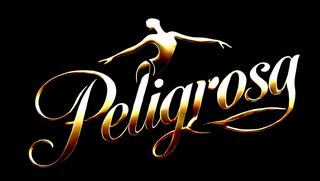Fashion is more than just clothing; it is a powerful expression of culture, identity, and social evolution. As Stefano Gabbana (Dolce & Gabbana) aptly noted:
"Fashion takes its inspiration from society and everyday life, which is the same for everyone, and this is perhaps the reason why certain elements recur".
Peligrosa (www.peligrosa.online) offers unique designs inspired by cultural heritage, movement, and self-expression. Whether it’s streetwear, elegant outfits, or sportswear, fashion serves as a communication tool, allowing people to express their personality, beliefs, and social status.
Fashion as a Reflection of Society
Fashion has always reflected societal values and norms, symbolizing the spirit of the times. The way we dress mirrors political changes, economic conditions, and cultural trends. The cyclical nature of fashion often shows how past styles reappear and adapt to modern ideals (ResearchGate).
Each social class and group creates its own fashion identity based on its values and interests:
- Entrepreneurs and professionals prefer elegant outfits that convey success and confidence.
- Athletes and dancers wear clothing that reflects movement and individuality.
- Artists and creatives favor original and experimental pieces that showcase their creative personality.
- Youth and street culture often draw from underground trends, creating an authentic and rebellious look.
Fashion is therefore more than aesthetics – it is a reflection of social status, profession, interests, and individual lifestyle.
The Socio-Psychological Mechanisms of Fashion
Beyond its visual appeal, fashion influences social interactions and self-perception. People often dress to:
✔ Gain social recognition – Many professions have dress codes that signal professionalism and success.
✔ Express individuality – Creative individuals select clothing that makes them stand out.
✔ Belong to a group – Fashion can indicate membership in a subculture or ideology.
✔ Make a strong first impression – Clothing communicates our status before we even speak.
The tension between conformity and uniqueness drives the fashion industry, as individuals seek a balance between fitting in and standing out (ResearchGate).
The Role of Fashion in Identity Formation
Clothing is a visual language that communicates our identity. From traditional garments to high fashion, what we wear reflects our background, profession, and even aspirations.
Peligrosa (www.peligrosa.online) embodies this principle by merging cultural influences with modern design, allowing individuals to express themselves boldly and authentically.
- Bold patterns symbolize confidence and energy.
- Minimalist designs convey sophistication and refined taste.
- Sports and dancewear reflect movement and determination.
Style thus becomes a means of storytelling and personal branding.
The Evolution of Fashion Trends
Fashion trends continuously shift in response to social and economic factors. The trickle-down theory suggests that trends originate in high fashion before reaching the mainstream.
Today, however, fashion is also shaped by digitalization, street style culture, and grassroots movements, meaning that inspiration now flows in multiple directions.
Fashion is no longer dictated solely by luxury fashion houses – consumers themselves shape trends through social media, influencers, and community-driven movements (Wikipedia).
Conclusion
Fashion is a dynamic force, a living reflection of social evolution that connects the past, present, and future. It mirrors cultural shifts, personal identity, and social transformation.
Peligrosa (www.peligrosa.online) aligns with Socrates’ belief:
"Let your outward beauty be a reflection of your inner beauty."
This statement emphasizes that fashion should not be solely about appearance but should also reflect character, values, and inner harmony.
How do you perceive fashion? Do you follow trends, or do you prefer to embrace your own style? Let us know in the comments!
References
- Antony, V. A. R., & Chinnammal, S. K. (2018). Fashion and Society. ResearchGate.
- Akdemir, N. (2018). Visible Expression of Social Identity: the Clothing and Fashion. ResearchGate.
- Vasileva, E. (2023). Fashion and the Question of the Symbolic: The Ideology of Value and Its Limits. Vestnik of Saint Petersburg University. Arts, 13(2), 376–392.
- Peligrosa – Where fashion meets movement: www.peligrosa.online.
- This article is based on research published on ResearchGate and other academic sources.

